Traffic stopped at a roundabout as a large herd of elk ambled across the road. Suddenly a giant bull elk appeared, walking towards our car. It stopped, leaned back his head and left out a full-throated bugle, the sound of fall that never fails to give me chills.
I was in Estes Park, Colorado, and the elk show was on. The crisp air, beautiful scenery and elk calls echoing off the mountains make for a memorable
Autumn is a wonderful time to be a naturalist in the United States (where many of our readers live). There are several spectacular migrations happening and it’s a great time to observe the local wildlife.
Here are some of my favorite fall natural spectacles. I hope you can get out and enjoy them.
-
Raptor Migration
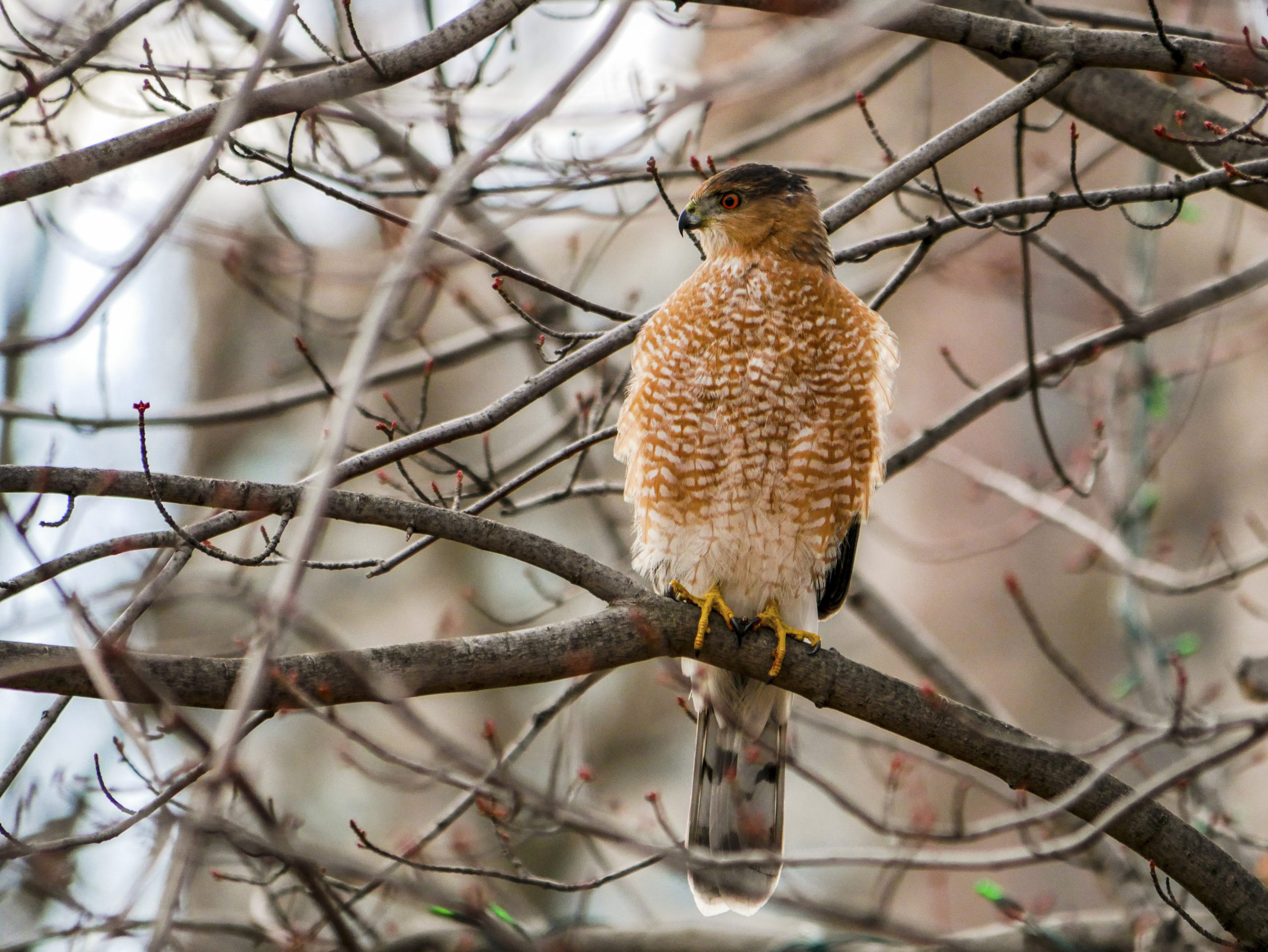
Look out for an accipiter migration near you. © Todd Bannor/TNC Photo Contest 2019 Just outside my window, the California quail are nervous. They’ll be scratching around the yard when suddenly, a seeming rocket drops from a nearby tree, resulting in an explosion of quail feathers. Cooper’s and sharp-shinned hawks migrate through this area, on the edge of the Boise Foothills in southwestern Idaho. They’ll stop by for a quail dinner or two before continuing on across the Idaho high desert.
Across North America, the fall raptor migration is underway. Many hawks and other birds of prey follow ridges, allowing birders to see hundreds if not thousands of birds.
The most famous of these is Hawk Mountain Sanctuary in Pennsylvania, a ridge with its own interesting conservation history.
A popular “sport” in the early 20th century involved lining up along known raptor migration routes and blasting the birds as they passed overhead. Thousands of birds of prey died in this way. The first step in protecting raptors involved educating people about the issue.
Richard Pough (who would later become the first president of The Nature Conservancy) visited Hawk Mountain in 1929 and documented the carnage.
His photos led another conservationist, Rosalie Edge, to lease that eastern Pennsylvania ridge, eventually establishing the world’s first sanctuary for birds of prey. She hired a game warden and the shooting stopped immediately. Today Hawk Mountain is a must-visit hotspot for many birders and naturalists to witness the annual raptor migration.
There are many other spots to catch the migration. The Golden Gate Raptor Observatory in California and Hawk Ridge Nature Reserve in Minnesota offer spectacular viewing (and excellent educational programs). HawkWatch International operates more than a dozen research sites throughout the western United States, all open to the public.
And if you keep an eye out in the local city park or around your neighborhood, you may well spot raptors passing through.
-
Waterfowl Migration
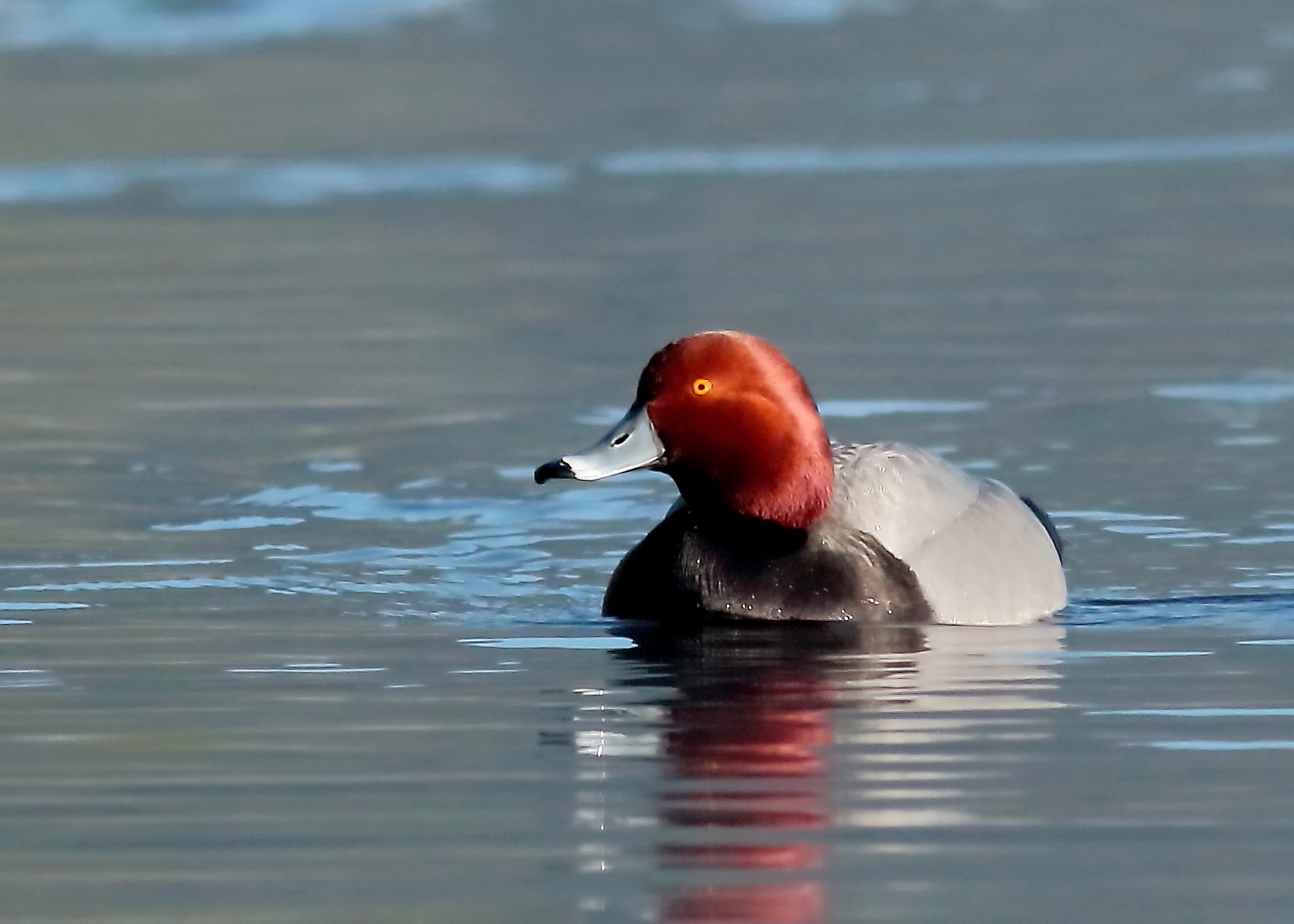
A redhead duck. © Terry Roth For me, there’s nothing much better than the sound of a marsh at dawn echoing with the sounds of thousands of ducks, geese and shorebirds. Waterfowl conservation is one of the most successful wildlife recovery stories in the world, funded in no small part from the sales of the Federal Migratory Bird Hunting and Conservation Stamp (commonly called the “duck stamp”).
This program has helped fund the National Wildlife Refuge System, and many offer just jaw-dropping waterfowl viewing at this time of year. I’ve watched snow goose flocks that take 45 minutes to pass overhead. I’ve seen thousands of sandhill cranes drifting into a wetland in the evening. I’ve watched huge flocks of redheads and canvasbacks and tundra swans and many other species.
While drought has meant poor waterfowling nesting success in much of North America this year, you should still be able to see great flocks this fall.
Some of my favorite memories for fall water birding include Quivira National Wildlife Refuge and Cheyenne Bottoms in Kansas, the Horicon Marsh in Wisconsin, Chincoteague Island in Virginia and the Chesapeake Bay in Maryland.
But wherever you live, there’s like a national wildlife refuge within driving distance. And thanks to conservation, you can find a diversity of ducks, geese and other water birds in nearly any pond, creek or river.
-
Dragonfly Migration
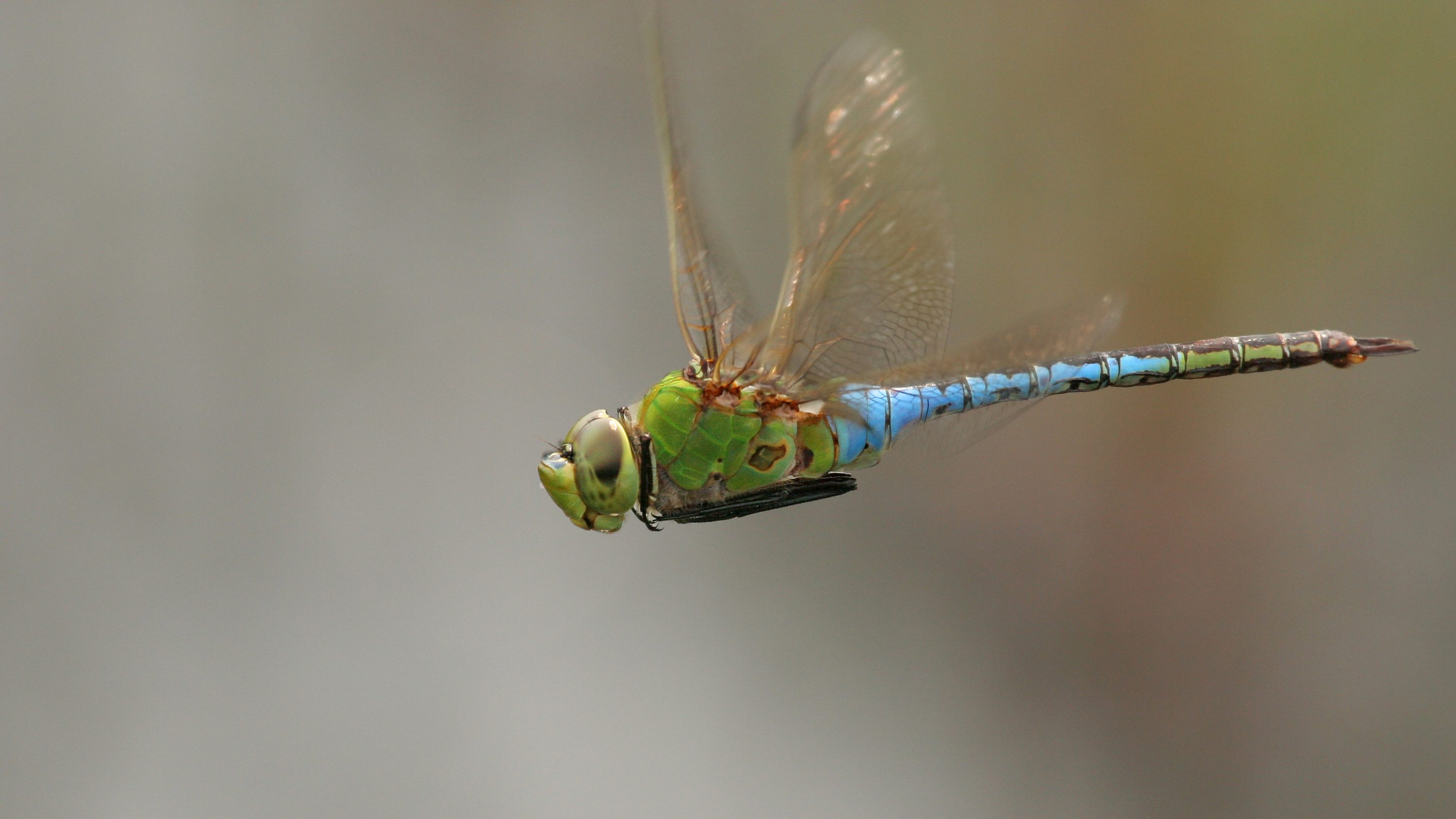
Common green darner dragonfly. © Damon Noe Birds aren’t the only creatures that embark on winged migrations. Dragonflies also engage in extensive (often multigenerational) migrations south in the fall. Even better, some of the best spots for seeing lots of dragonflies are also the best spots for birding.
Dragonfly watching is a growing hobby, particularly in the United Kingdom and Europe. It is slowly catching on in the United States. After all, they’re very cool insects, and quite observable. I often see them flying around my neighborhood. More hard-core enthusiasts use binoculars. There are now good field guides and even tours with experts.
Significant numbers of kestrels and nighthawks have been observed following along migrating green darner dragonflies, adding a predator-and-prey element to this migration. Because many raptor watching and bird banding sites are keeping close eyes on the skies, they can be good starting points. The aforementioned Hawk Ridge as well as birding destinations like Cape May are now also recognized as dragonfly watching hotspots.
-
Turkey Flocks

Wild turkey (Meleagris gallopavo) roam the grassland woodland and prairie in the Sand Hills region of Nebraska. © Mark Godfrey Wild turkeys don’t migrate. But they are fun birds to watch, especially in the autumn. Spring turkeys, with the loud gobbling displays, get most of the attention. But in the fall, you can observe the fascinating flock structure and dominance displays.
If you find a patch of forest with plentiful acorns and some large trees, nearly anywhere in the United States, chances are there are some turkeys nearby.
Given their fall antics – including scratching, roosting, and dominance fights – they’re spectacular birds to watch. Since they’re abundant, and increasingly found even close to towns and cities, turkey spotting is a widely available adventure. You will need to be extremely quiet to catch a glimpse.
Read my previous blog for a complete look at the habits of fall turkeys.
-
Elk Bugling
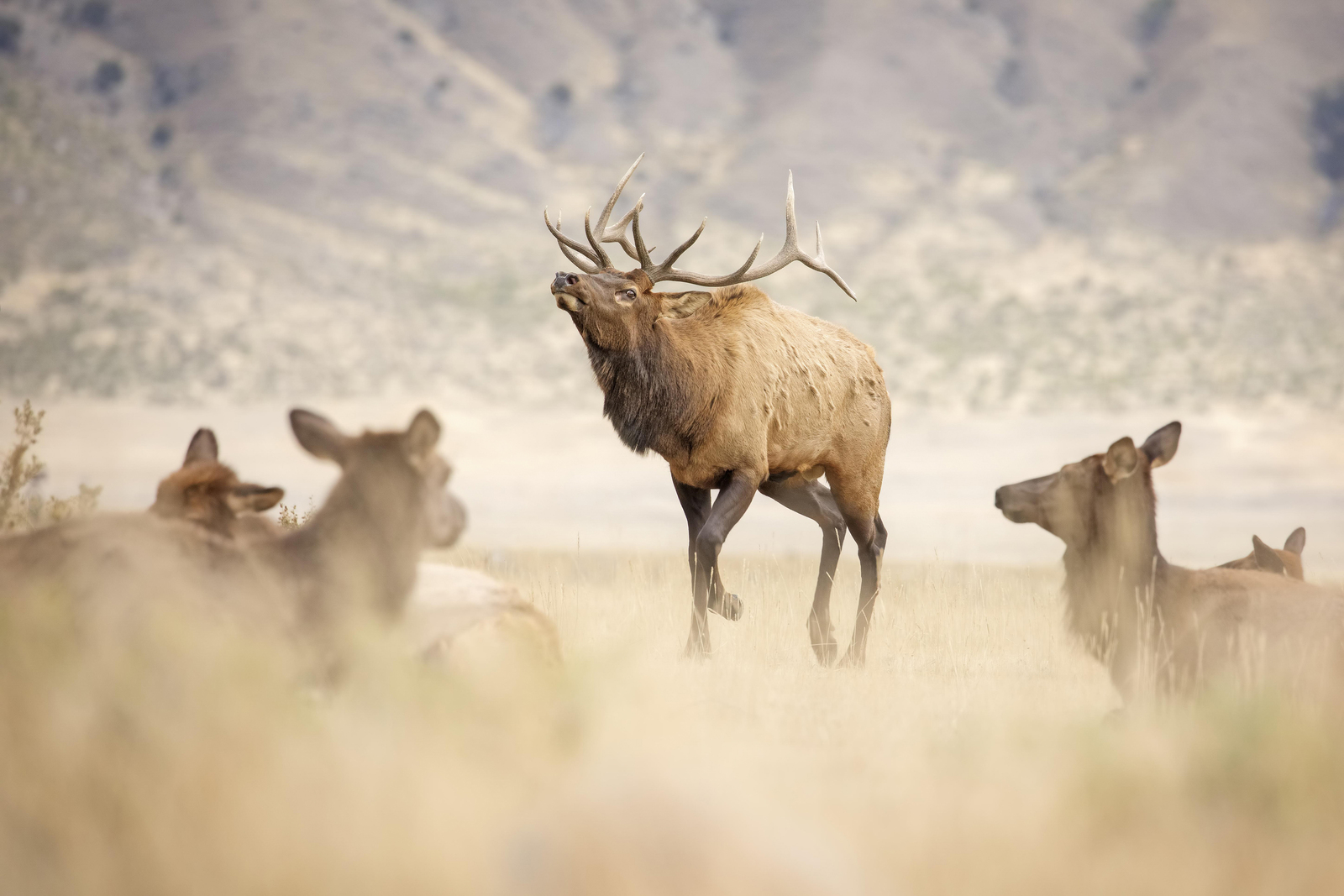
A bull elk struts in front of a harem of females in an effort to impress. © Scott Suriano/TNC Photo Contest 2019 I’ll say it again: there really is no better fall experience than hearing a bull elk in full bugle. If you can hear it live and not get goose bumps, you’re visiting the wrong blog.
Bugling is tied to the elk mating season, or rut, although the exact reasons for the bugling remain poorly understood. Check out our previous field guide to elk bugling for more on the vocalizations and ongoing elk research.
Rocky Mountain National Park and adjacent Estes Park in Colorado is my favorite to enjoy the fall elk show. Bugles echo in town, in the valleys, while I’m hiking and fishing. Yellowstone National Park is another obvious pick, but elk are found widely in the western United States.
And thanks to reintroduction efforts, you can now hear elk in much more of their native range. The “Pennsylvania Wilds” near the town of Benezette is a great place to hear elk bugling in the East. You can also hear them in Smoky Mountains National Park, in Kentucky, Virginia and many other places, where the elk are thriving after a long absence.
-
Whitetail Rut
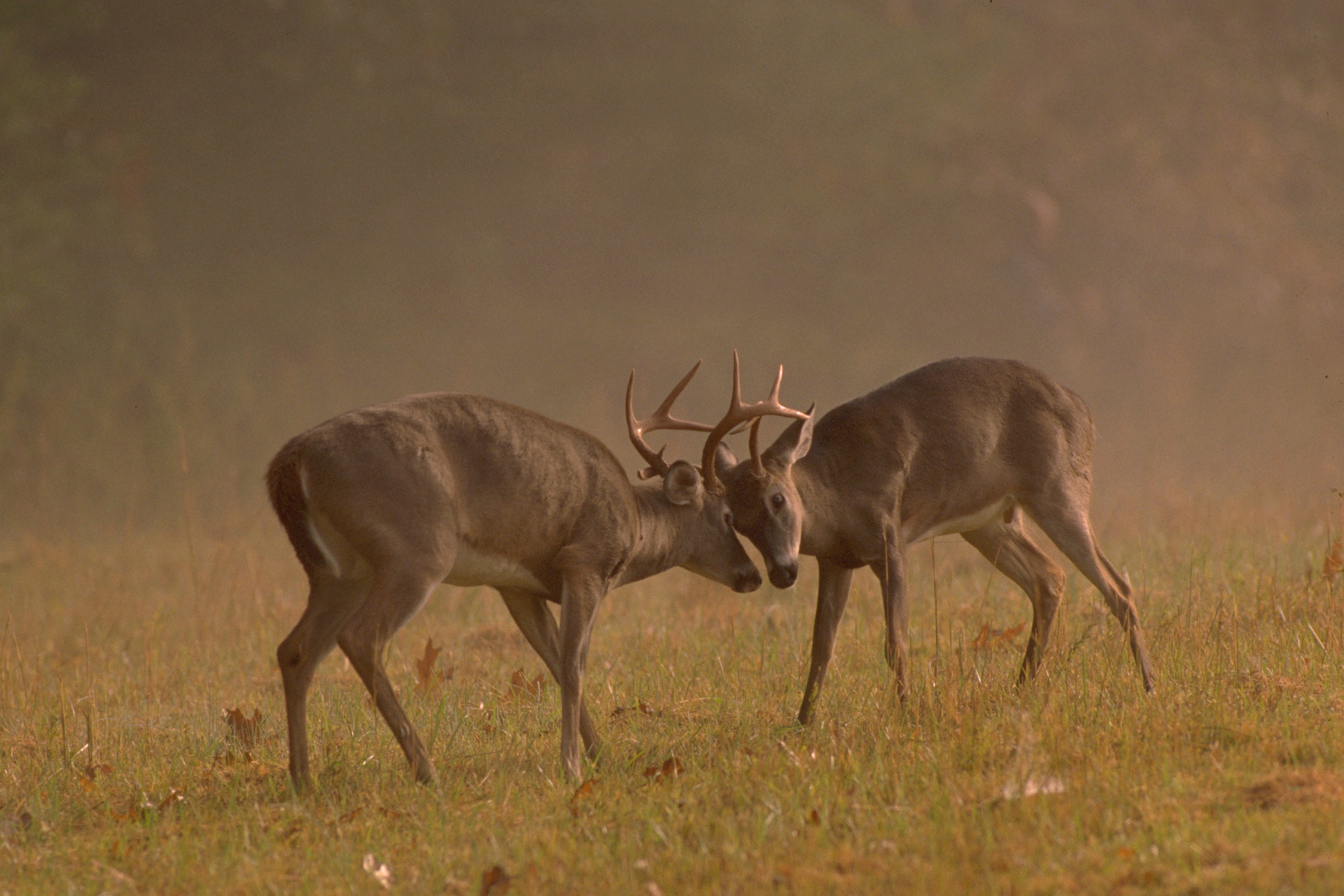
Bucks sparring in Great Smoky Mountains National Park, Tennessee. © Barbara E. Kuebler If you can’t get out to see the elk, there’s another antlered animal that may be closer to home. White-tailed deer abundant (often too abundant) and live in agricultural, suburban and even urban areas. They’re the largest mammal nearest most people in the United States.
They’re so common that many people take these deer for granted. It’s true that a grunting whitetail buck is not a bugling elk. But I’m a big proponent of observing the wildlife, even the common species, that live around you.
So go deer watching this fall. A male white-tailed deer does vocalize, but it’s a series of deep grunts. If you are really lucky, you might see two bucks sparring or engaged in a full-blown antler fight. The buck’s neck swells, and he will often be closely guarding does. Simply by being alert and spending time in the woods, I’ve seen all these behaviors and more.
-
Leaf Peeping
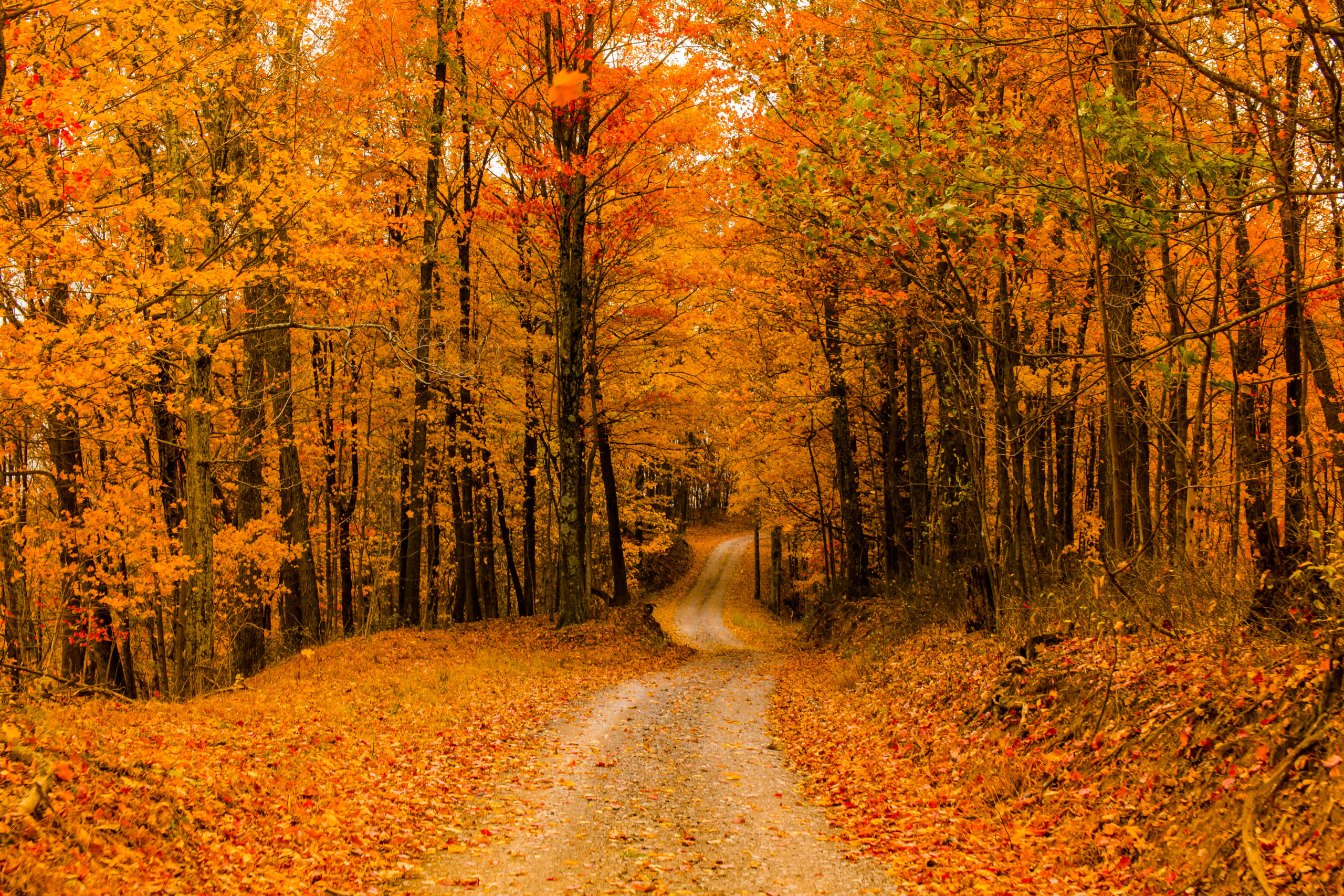
An acorns cache in California. © Harold E. Malde It’s not just about animals (something that I am embarrassed to admit I have to remind myself). For me, fall colors are a beautiful backdrop for my outdoor adventures. But for many, the fall foliage is the draw.
In the Northeast, there are bus tours and festivals that get you to the best leaf-viewing spots. In the Rockies, near my home, the golden aspen leaves are much more localized, but to my mind, no less stunning.
When will the leaves begin to change? Why did that tree turn first? Why are some leaves red while others are orange or yellow? Will the colors be more vibrant this year? Check out this guide by a fall foliage photographer to learn more.
-
Follow the Food

An acorn cache in California. © Harold E. Malde It’s a glorious time of year to go hiking in northern climes. But for wildlife, this is a season of urgency. Winter is coming. That’s why the raptors, waterfowl and dragonflies (among others) are heading south. But other animals don’t have that option. And they’re packing on the calories.
That presents a wildlife watching bonanza.
Acorns and other mast provide a feast. Walking in a hardwoods forest during a heavy acorn year, you can observe many creatures gorging, including squirrels, deer, bears, turkeys, blue jays and many more. Watch the gray squirrels in the city park; even such a familiar creature is fun to observe as it frantically packs away seeds and nuts.
Wild fruit and berry trees can draw a diversity of birds and other wildlife, and are well worth staking out. Our backyard hawthorn tree draws a lot of songbirds. It’s especially enjoyable when a large flock of cedar waxwings visits; they can clean up the berries in a day or two (coincidentally, this often occurs right around our Thanksgiving feast).
As leaves fall, you can see farther in the forest. This is my favorite time to take a walk in the woods. Walk slowly, look and listen. You never know what you might see out there.
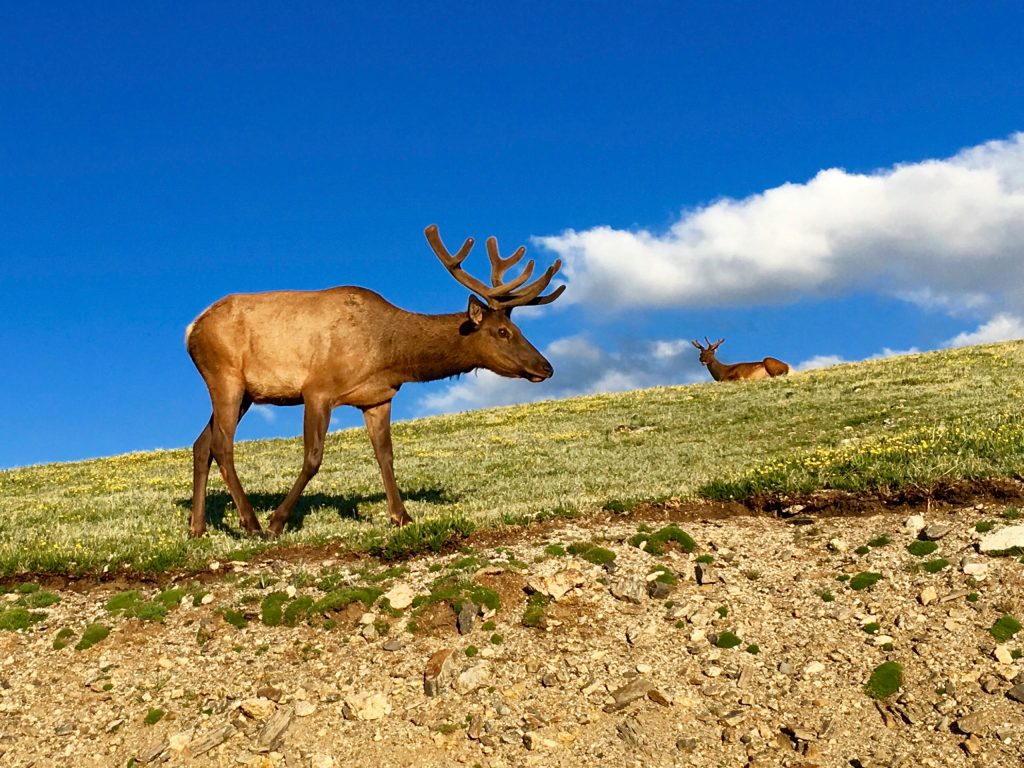



Beautiful country we live in!